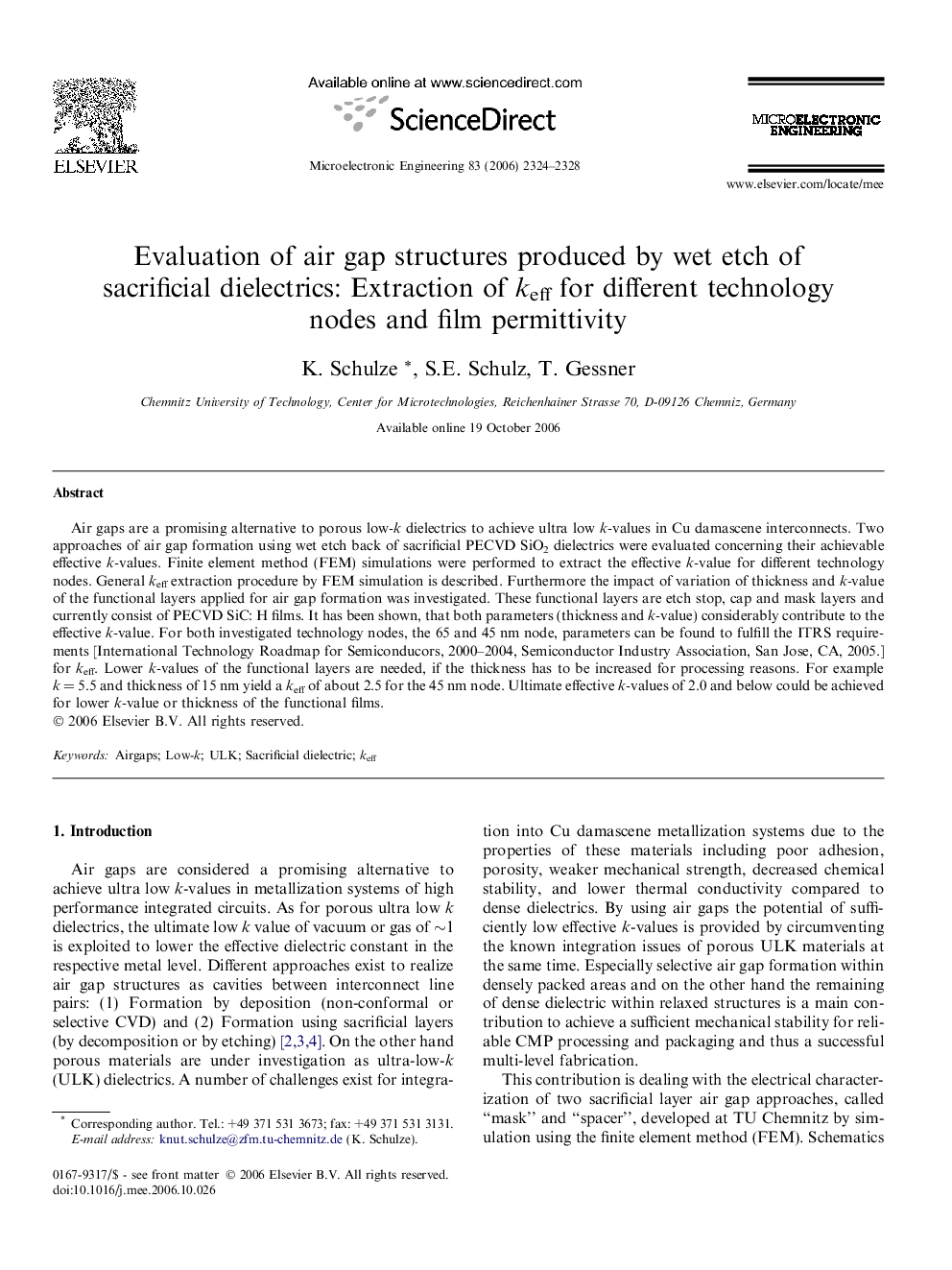| کد مقاله | کد نشریه | سال انتشار | مقاله انگلیسی | نسخه تمام متن |
|---|---|---|---|---|
| 541890 | 1450399 | 2006 | 5 صفحه PDF | دانلود رایگان |

Air gaps are a promising alternative to porous low-k dielectrics to achieve ultra low k-values in Cu damascene interconnects. Two approaches of air gap formation using wet etch back of sacrificial PECVD SiO2 dielectrics were evaluated concerning their achievable effective k-values. Finite element method (FEM) simulations were performed to extract the effective k-value for different technology nodes. General keff extraction procedure by FEM simulation is described. Furthermore the impact of variation of thickness and k-value of the functional layers applied for air gap formation was investigated. These functional layers are etch stop, cap and mask layers and currently consist of PECVD SiC: H films. It has been shown, that both parameters (thickness and k-value) considerably contribute to the effective k-value. For both investigated technology nodes, the 65 and 45 nm node, parameters can be found to fulfill the ITRS requirements [International Technology Roadmap for Semiconducors, 2000–2004, Semiconductor Industry Association, San Jose, CA, 2005.] for keff. Lower k-values of the functional layers are needed, if the thickness has to be increased for processing reasons. For example k = 5.5 and thickness of 15 nm yield a keff of about 2.5 for the 45 nm node. Ultimate effective k-values of 2.0 and below could be achieved for lower k-value or thickness of the functional films.
Journal: Microelectronic Engineering - Volume 83, Issues 11–12, November–December 2006, Pages 2324–2328